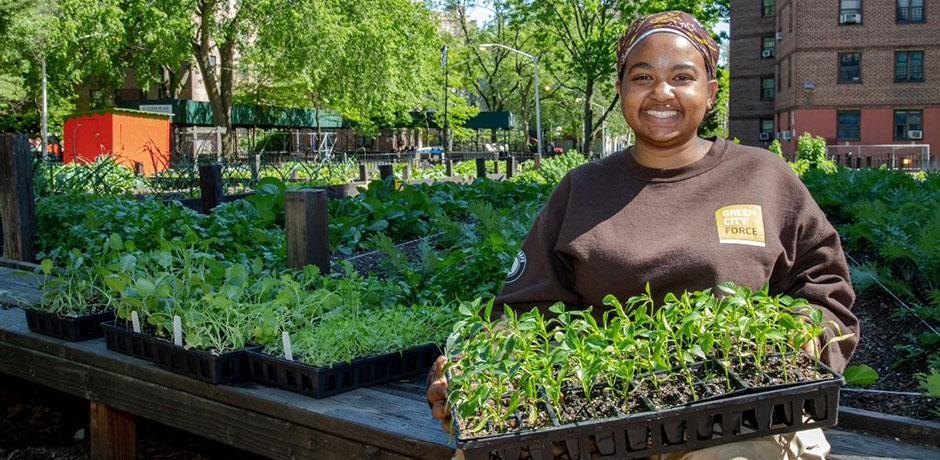Getting My City Blooming To Work
Getting My City Blooming To Work
Blog Article
Not known Facts About City Blooming
Table of ContentsA Biased View of City BloomingExcitement About City BloomingThe Only Guide for City BloomingThe smart Trick of City Blooming That Nobody is Talking AboutEverything about City Blooming
Interested in expanding food for sale in the City of Chicago? Below is a list of often asked inquiries pertaining to the rules and policies that farmers ought to take into consideration when planning an urban agriculture project.
The zoning modification does not modify any type of other codes taking care of composting, structure licenses, acquiring or renting City owned property, company licenses or ecological contamination. There are existing codes that regulate these issues and they remain in complete result and might apply to your task. Community yards are commonly possessed or handled by public entities, public organizations or community-based organizations and maintained by volunteers.
Urban farms expand food that is intended to be sold, either on a nonprofit or for-profit basis. Due to their business function, metropolitan farms require an organization license.
How City Blooming can Save You Time, Stress, and Money.
Composting is enabled but only for plant product that is generated and made use of on website. The quantity of compost product can not exceed 25 cubic backyards at any type of offered time according to the standards in 7-28-715 of the City's Municipal Code. Yes. Due to the fact that the soil at most new yard websites needs modifying, compost, soil, timber chips, or various other products can be gotten to construct or improve the expanding area - container and raised bed gardening etc..

If a structure license is called for after that the hoophouse will be taken into consideration an accessory structure. You can figure out even more regarding the structure authorization needs by getting in touch with the Department of Structures. The 25,000-square-foot size restriction is meant to protect against a solitary neighborhood yard from dominating a given block or detracting from the block's existing domestic or industrial character.
The restriction does not use to gardens located in Public Open Area (POS) districts. Can there be more than one area garden that is 25,000 square feet on a single block? Secure fencing is not required, nonetheless, gardens that have huge parking locations may be called for to install secure fencing or other landscape design functions.
The Basic Principles Of City Blooming
B1 & B2 districts need that all commercial use activities be carried out inside. R districts restrict commercial activity. The guidelines mirror the purpose and intent of the Zoning Code. Is fencing required for urban farms? Yes. Fences might be needed, in addition to landscape design and testing, for sure car parking areas and outside job or storage space locations depending upon place and the particular activity occurring.
Yes. Urban ranches need structure permits and zoning approvals prior to construction. Various other forms of city review may be called for depending upon certain frameworks, activities, size, landscaping, licensing, public heath and stormwater management problems. Numerous of these requirements are recognized in the task layout or allowing process, however, the candidate might be accountable to individually identify details licenses or allows that might be needed.
The Division of Organization Affairs and Consumer Security can aid identify the details type of service certificate that's required. try this out Off street auto parking is required for a lot of business tasks in Chicago. The needed number of car parking areas is based on the number of employees working on site and not the square video footage of the growing area.
City Blooming Fundamentals Explained

Yes. An urban ranch can offer garden compost product generated on site, however, the operation should abide by the policies in 7-28-715 of the Chicago Municipal Code. Yes. Aquaponic systems are permitted indoors on city ranches in several zoning districts. A zoning testimonial and building license is needed in order to set up frameworks or systems and a business certificate is required as described above.
Up to five hives or swarms of honey might be maintained as an accessory use. Nonetheless, beekeepers must sign up with the Illinois Department of Farming. To learn more regarding the proposed zoning modification you might get in touch with the Division of Real Estate and Economic Development, Bureau of Preparation and Zoning at 312.744.8563.
, which takes area in country areas at the edge of suburbs.
City Blooming Things To Know Before You Get This
It can involve a movement of natural cultivators, "foodies" and "locavores", that look for to create socials media founded on a shared ethos of nature and neighborhood holism. These networks can establish by means of formal institutional support, ending up being incorporated right into neighborhood town as a "shift community" movement for lasting city advancement.
The extra direct accessibility to fresh veggie, fruit, and meat items that may be realised with urban farming can improve food security and food safety and security while lowering food miles, leading to reduced greenhouse gas emissions, thereby adding to climate modification mitigation. Several of the very first evidence of city agriculture comes from Mesopotamia.
Report this page